#ectopistes migratorius
Explore tagged Tumblr posts
Text



36 notes
·
View notes
Text
Paleostream 23/03/2024
WHOOPS GUESS WHO FORGOT TO POST YESTERDAY'S #Paleostream SKETCHES!!!
yesterday we drew Ectopistes migratorius (Passenger Pigeon), Eclectus infectus (Oceanic Eclectus), Kosmoceratops, and Otus frutuosoi (São Miguel scops owl)

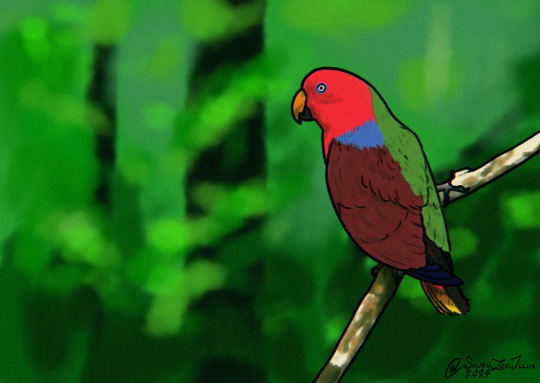
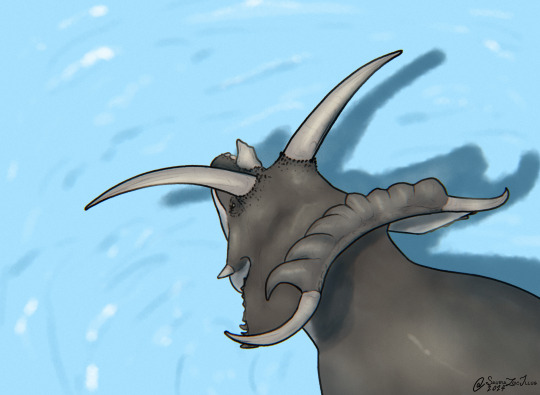

#Paleostream#paleoart#paleontology#digital art#artists on tumblr#digital artwork#palaeoart#digital illustration#id in alt text#sciart#dinosaur#bird#birds#bird art#pigeon#owl#parrot#Ectopistes migratorius#Passenger Pigeon#Eclectus infectus#Oceanic Eclectus#Kosmoceratops#ceratopsian#Otus frutuosoi#Sao Miguel scops owl#paleobr#palaeobr
48 notes
·
View notes
Text

Wandertaube | Die Vögel (1913) | Alfred Edmund Brehm (1829-1884) | Biodiversity Heritage Library
#alfred edmund brehm#illustration#biologie#ornithologie#vögel#wandertaube#ectopistes migratorius#columbidae
20 notes
·
View notes
Note
Thoughts on making the Mourning Dove the new State Bird in Ohio? Sorry if this isn't a good bird for Ohio, I'm not too good at birds.

Thanks for the question! And no worries; all suggestions are welcome, and nothing's off the table!
Y'know, it's funny. I've always loved Mourning Doves (Zenaida macroura), personally. They're extremely common and recognizable (by sight and sound), they're found in urban and suburban environments, and they're generally charming. When I moved back to the continental USA as a kid, this was one of the first birds I recognized. But is it Ohio? At first blush, I would say that it's about as valid as the present state bird, the Northern Cardinal (Cardinalis cardinalis), in that it's a recognizable backyard bird that would probably be received positively by the public. So, hey, maybe it could work, but I'm not sure it's the best fit.
However. There is an argument to be made, in a very...odd way. Because if we want to use the state birds to tell a conservation story, and we want to tell a story in Ohio in particular...there is a story to be told for a different species. But to tell it, we would have to use the Mourning Dove. And that's because...

...the Passenger Pigeon (Ectopistes migratorius) is very VERY extinct. OK, is this cheating? Kind of. Obviously, this isn't a species of conservation concern...anymore. BUT!!! It's an important story about how humanity can drive even an extremely common species into extinction. But why use this for Ohio? After all, some of the last wild individuals were reported in Indiana, not Ohio. However, the last Passenger Pigeon EVER was Martha, a pigeon living in the Cincinnati Zoo until 1914, when she passed away some years after her mate did in the same zoo. So, in a very real sense, the story of the Passenger Pigeon ends in Ohio, and her legacy can be carried out by the only native pigeon species that breeds in the state, the Mourning Dove.
So, hey, there's an argument there for the Mourning Dove to be Ohio's state bird, outside of its recognizability and status as a common backyard bird! Do I think it's the ideal choice? Well, I don't know, honestly. I have yet to look into Ohio in more detail, but it's not impossible! Plus, thank you for bringing this up to me, because I may not have thought of it otherwise! Oh, and for the record, if you're interested in Martha, you can still see her! After her death, she was sent to the Smithsonian Institute in Washington D.C., where she's currently on display in the Objects of Wonder exhibit at the National Museum of Natural History! But I'd go finder her there soon; the exhibit closes in 2025, and who knows when and where she'll go on exhibit again after that!
But I'll remember this question when I get to Ohio, and I'll bring this idea up! We'll see what others think about it; maybe they'll agree!
#bird#birds#birdblr#bird tumblr#mourning dove#zenaida macroura#passenger pigeon#state bird initiative#state bird#birding#birders#birdwatchers#birdwatching#columbiformes#columbidae#doves#dove#pigeons#pigeon#ectopistes migratorius#extinct animals#extinct birds#martha#cincinnati zoo#national museum of natural history#smithsonian#ohio
7 notes
·
View notes
Text
Passenger Pigeon (Ectopistes migratorius)
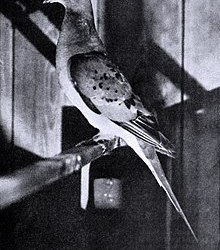
Passenger pigeon were thought to be related to Mourning Dove, based on their outside appearance, but after a 2010 genomic study, it turns out that they're more closely related to the genus Patagioenas, which includes band-tailed pigeon, spot-winged pigeon, red-billed pigeon, and plumbeous pigeon.
Since Ohio is terrible at everything (I can say that, I'm from there), that is where the last confirmed wild passenger pigeon was shot. Martha, the last living passenger pigeon, died in the Cincinnati Zoo (which is also in Ohio).
"These pigeon migrated in enormous flocks, constantly searching for food, shelter, and breeding grounds, and was once the most abundant bird in North America, numbering around 3 billion, and possibly up to 5 billion." Passenger pigeons practiced communal roosting and communal breeding, and their extreme gregariousness may be linked with searching for food and predator satiation- think the way cicadas emerge en masse so that. This is likely a large reason why individuals couldn't continue on themselves, as they needed those large colonies in order to trigger breeding behavior and to find the acorn masts that would sustain their numbers.
Source:
also my roommate's notes of sophomore year ornithology
22 notes
·
View notes
Text

#ectopistes migratorius#pombo-passageiro#passenger pigeon#animal#bird#death#userbox#wikipedia#upload
14 notes
·
View notes
Text
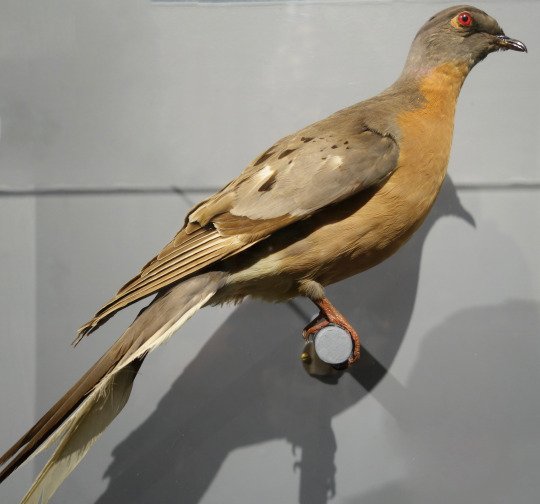
Ectopistes migratorius .. [2 / 2]
A specimen of now extinct passenger pigeon preserved at the Harvard Museum of Natural History, Cambridge, MA.
Some distracting and unnecessary signage elided using Pixelmator.
#Sony#WalkCam#RX100M2#fauna#bird#pigeon#Passenger pigeon#Ectopistes migratorius#museum#HMNH#Harvard Museum of Natural History#Cambridge#Massachusetts#USA#cropped#Pixelmator
3 notes
·
View notes
Text
In English last year we had to write an elegy about someone we miss, and…

i miss her.. (bird that went extinct a hundred years before my lifetime)
604 notes
·
View notes
Text

On this day in 1914, Martha, the last-known living Passenger Pigeon (Ectopistes migratorius) died at the Cincinnati Zoo. Her death at age 29 after a lifetime in captivity marked the disappearance of her once-abundant species from the world. And it made her name synonymous with species extinction at human hands. But what happened?
Before the second half of the nineteenth century, the Passenger Pigeon was the most common bird in the United States, with a population numbering in the billions. Flocks of pigeons flying overhead were so dense that they could darken the skies. But a combination of overhunting and habitat destruction sent this species into decline, and by the turn of the century, it was considered extinct in the wild.
Photo: Enno Meyer, CC0 1.0, Wikimedia Commons
#science#nature#natural history#animals#fact of the day#did you know#otd#on this day#extinct animals#extinction#conservation#pigeon#passenger pigeon
682 notes
·
View notes
Text

Passenger Pigeons, Ectopistes migratorius, extinct 1914
529 notes
·
View notes
Text
Animal of the Day!
Passenger Pigeon (Ectopistes migratorius)

(Photo from Atlas Obscura)
Extinction Date- 1914
Habitat- Eastern United States
Size (Weight/Length)- 200 g; 40 cm
Diet- Nuts; seeds; Berries; Insects; Worms
Cool Facts- Imagine the sky so full of birds that it seemed like night. That’s how John James Audubon described the migration of the passenger pigeon. In the 1800s, passenger pigeons were one of America’s most abundant birds. These huge flocks would feast on acorns, beechnuts, and chestnuts, spreading millions of seeds. Their communal breeding colonies would cause branches to snap by the weight of thousands of birds. When a ‘resource’ seems endless to humans, they always find a way to exploit it. Passenger pigeons were slaughtered in the millions for their feathers to be used in pillows and their meat. Extinction was not defined when the passenger pigeon began their decline. In 1895, the last egg was taken from the wild as a museum specimen and the last wild individual was purposefully shot in 1896. In 1902, the last captive bred passenger pigeon was given to the Cincinnati Zoo, her name being Martha. Martha passed away in 1914 and with her, an entire species.
Rating- 13/10 (One of the most important historical lessons in conservation.)
#animal of the day#animals#birds#pigeons#wednesday#october 4#passenger pigeon#biology#science#conservation#the more you know#extinct#extinctober
183 notes
·
View notes
Text

Columbiforme: detected
Species: Passenger pigeon (Ectopistes migratorius)
Hello, I detect Columbiformes (doves, pigeons, dodoes, and solitaires) in posts. Send me asks or tag me in posts with Columbiformes!! Please
39 notes
·
View notes
Text
Today is #AudubonDay, commemorating pioneering naturalist and artist John James Audubon who was born #OTD (26 April 1785 - 27 January 1851). I put together this overview of the 5 now extinct and 3 other possibly extinct birds whose images are recorded in The Birds of America for the blog:


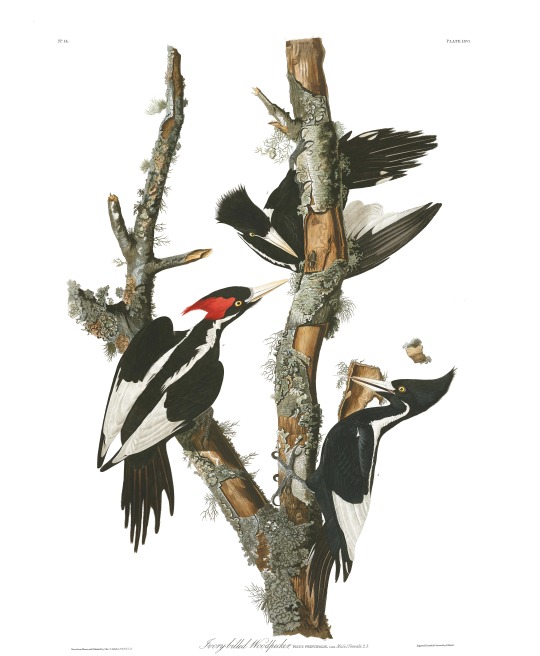


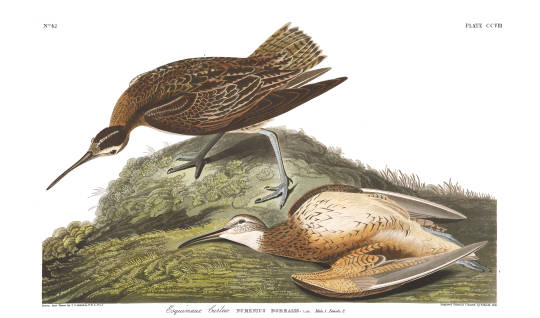


Plate 26: Carolina Parrot, 1827 (Carolina Parakeet, Conuropsis carolinensis) Plate 62: Passenger Pigeon, 1829 (Passenger Pigeon, Ectopistes migratorius) Plate 66: Ivory-billed Woodpecker, 1829 (Ivory-billed Woodpecker, Campephilus principalis) Plate: 185: Bachman’s Warbler, 1834 Bachman’s Warbler, Vermivora bachmanii) Plate 186: Pinnated Grous, 1834 (Heath Hen, Tympanuchus cupido cupido) Plate 208: Esquimaux Curlew, 1834 (Eskimo Curlew, Numenius borealis) Plate 332: Pied Duck, 1836 (Labrador Duck, Camptorhynchus labradorius) Plate 341: Great Auk, 1836 (Great Auk, Pinguinus impennis)
All plate images courtesy of the John James Audubon Center at Mill Grove, Montgomery County Audubon Collection, and Zebra Publishing. The entire digitized collection is available for viewing and downloading here.
#Audubon Day#Audubon#John James Audubon#bird#birds#birding#ornithology#ornihological illustration#scientific illustration#natural history art#sciart#19th century art#American art#lithograph#extinction#extinct birds#conservation biology#blog post#OTD#birthday post#animals in art
360 notes
·
View notes
Text

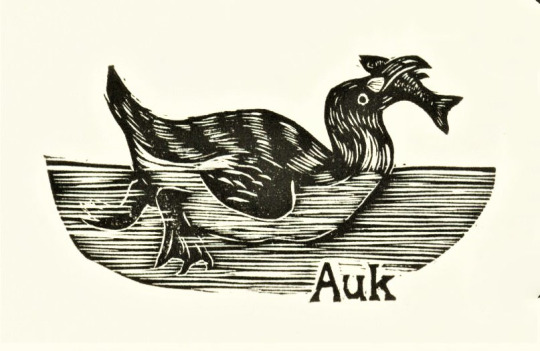


A Gone World Feathursday
Yesterday, we featured some woodcuts by the New Jersey-based artist Michael Dal Cerro (b. 1953) from his recently-donated 1992 artists book Small World Alphabet published in Seattle by Grey Spider Press in a limited edition of 75 copies. The book is an abecedarium highlighting the outsized impact our species has had on our planet's environment. Today we show all the woodcut birds presented in his book, and of course the unifying factor between these specific species is that they have all gone extinct through human intervention:
Dodo (Raphus cucullatus): a large flightless bird that was endemic to the island of Mauritius, part of a clade of extinct flightless birds that were members of the family which includes pigeons and doves. This docile bird that had never known predators was hunted to extinction by the late 17th century.
Great Auk (Pinguinus impennis): a large sea-going flightless bird of the family Alcidae that became extinct by the mid-19th century due to overhunting, particularly for its valuable down feathers used in pillows.
Heath Hen (Tympanuchus cupido cupido): an extinct subspecies of the Greater Prairie Chicken (Tympanuchus cupido), a large North American bird in the grouse family. Once extremely common, it became extinct in 1932, due to centuries of overhunting, predation by feral cats, and poaching.
Passenger Pigeon (Ectopistes migratorius): a migratory species of North American pigeon, once the most abundant bird on the continent, that was hunted to extinction by 1914.
View other posts on extinct birds.
View more Feathursday posts.
#Feathursday#extinct birds#Michael Dal Cerro#Small World Alphabet#Grey Spider Press#woodcuts#Dodo#Great Auk#Heath Hen#Passenger Pigeon#woodcut artists#abecedarium#abecederia#fine press books#fine press printing#birds#birbs!
147 notes
·
View notes
Text
The Fascinating World of Extinct Animals: Stories of Lost Species and Conservation Lessons 🌍✨

The DODOD Introduction The story of extinct animals is both a testament to the fragility of life and a reflection of the ever-changing nature of our planet. 🌎💔 Extinct animals, those species that no longer exist, capture our imagination and serve as poignant reminders of the impact humans and natural events have on biodiversity. 🐾📜 In this article, we delve into the causes of extinction, profile some notable extinct animals, and highlight the importance of conservation efforts to prevent further losses. 🛡️🌿 Notable Extinct Animals 1. The Dodo (Raphus cucullatus) Habitat: Mauritius, Indian Ocean 🏝️ Extinction Date: Late 17th century 📜 Causes: The dodo was driven to extinction by a combination of hunting by sailors and predation by introduced species such as rats, pigs, and monkeys. Habitat destruction also played a role. 🚢🐀🐖 2. The Passenger Pigeon (Ectopistes migratorius) Habitat: North America 🌎 Extinction Date: Early 20th century (1914) 📜 Causes: Once numbering in the billions, passenger pigeons were hunted extensively for food and sport. Deforestation also destroyed their natural habitat. 🏞️🍂 3. The Tasmanian Tiger (Thylacine) Habitat: Tasmania, Australia, New Guinea 🌏 Extinction Date: 20th century (1936) 📜 Causes: Hunting, habitat destruction, and competition with dogs contributed to the decline of the Tasmanian tiger. Government bounties also encouraged widespread killing. 🐕🏞️ 4. The Great Auk (Pinguinus impennis) Habitat: North Atlantic coasts 🌊 Extinction Date: Mid-19th century (1844) 📜 Causes: The great auk was hunted for its feathers, meat, and oil. Overharvesting of eggs and human disturbance of breeding sites also led to its extinction. 🌊🐦
5. The Woolly Mammoth (Mammuthus primigenius) Habitat: Northern Hemisphere (Europe, Asia, North America) 🌍❄️ Extinction Date: Approximately 4,000 years ago 📜 Causes: Climate change at the end of the last ice age reduced their habitat. Additionally, overhunting by early humans played a significant role in their extinction. 🌡️🏹 Causes of Extinction 1. Natural Causes Climate Change: Historical climate shifts, such as the ice ages, have drastically altered habitats, leading to the extinction of many species unable to adapt. ❄️🌡️ Natural Disasters: Volcanic eruptions, asteroid impacts, and tsunamis can create immediate and long-term changes to environments, wiping out species. 🌋☄️🌊 Predation and Competition: Evolutionary pressures, including predation and competition for resources, have naturally led to the extinction of less adaptable species. 🐅🍃 2. Human-Induced Causes Habitat Destruction: Deforestation, urbanization, and agriculture reduce the natural habitats of many species, leading to their decline. 🏞️🪓🏘️ Overexploitation: Hunting, fishing, and poaching have driven many species to extinction by depleting their populations faster than they can reproduce. 🎣🏹💔 Pollution: Industrial waste, pesticides, and plastics contaminate ecosystems, causing health problems and deaths in wildlife. 🏭🧴🐢 Climate Change: Human activities such as burning fossil fuels contribute to global warming, affecting the natural habitats and lifecycles of many species. 🌍🔥🏭 Introduction of Invasive Species: Non-native species introduced by humans can outcompete, prey on, or bring diseases to native species, leading to extinction. 🐍🌱🌏 The Importance of Conservation The extinction of species has a profound impact on ecosystems and the services they provide. 🐾🌿 Biodiversity is crucial for maintaining ecological balance, pollination of plants, purification of water, and many other functions essential for life on Earth. 🌍💧 Conservation efforts are vital to protect the remaining species and prevent further extinctions. Here are some key strategies: Protected Areas: Establishing national parks and wildlife reserves to safeguard habitats. 🏞️🛡️ Legislation: Enforcing laws against poaching, illegal logging, and trade in endangered species. 📜🚫 Captive Breeding Programs: Breeding endangered species in captivity to reintroduce them into the wild. 🦏🐣 Habitat Restoration: Rehabilitating degraded ecosystems to support wildlife. 🌱🏞️ Climate Action: Mitigating climate change by reducing greenhouse gas emissions. 🌍🔥 Public Awareness: Educating people about the importance of biodiversity and conservation efforts. 🧑🏫🌿
Conclusion The history of extinct animals is a sobering reminder of the delicate balance of life on Earth. 🌍💔 While the loss of species like the dodo and the Tasmanian tiger can never be undone, we can learn from these events to better protect the remaining biodiversity. 🐾🌿 Through concerted conservation efforts, we can strive to preserve the natural world for future generations, ensuring that more species do not meet the same fate as those that have already been lost. 🌍💚 Join the Conversation! 🌟 If you found this article informative, please like, comment, and share it with fellow wildlife enthusiasts. Together, we can make a difference in protecting our planet's incredible wildlife. 🌟

The Mammoth
#animal#planet#wildlife#plants#animals#nature#forest#nature photography#naturelovers#photos#extinct animals#biodiversity#conservation#wildlifeprotection#saveourplanet#ecofriendly#nature lovers#greenliving#preservenature
14 notes
·
View notes
Text











Ectopistes migratorius better known as the passenger pigeon or wild pigeon is an extinct species of pigeon that was endemic to North America. Its common name is derived from the French word passager, meaning "passing by", due to the migratory habits of the species. The scientific name also refers to its migratory characteristics. Pasenger pigeons once ranged throughout the majority of North America, being found anywhere where deciduous forests and mixed woodland could be found. However breeding primarily occurred around the Great Lakes, Hudson Bay, eastern rockies, and the Appalachian mountains. There diet primarily consisted of nuts, seeds, cherries, berries, grapes, grains, worms, caterpillars, snails, ticks, and other invertebrates. The passenger pigeon was nomadic constantly migrating in enormous flocks searching for food, shelter, and breeding grounds. The passenger pigeon was once the most abundant bird in North America and possibly the most numerous species of bird on earth numbering anywhere from 3 to 5 billion animals. With flocks so big people reported they blocked out the sun for hours on end. Reaching around 15 to 16 inches (38 to 40.6cms) in length and 9.2 to 12oz (260 to 340g) in weight, the passenger pigeon was a sexually dimorphic species with males being slightly larger and possessing a coloration of mainly gray on the upperparts, lighter on the underparts, with iridescent bronze feathers on the neck, and black spots on the wings. Whilst the slightly smaller female had a coloration of grey on throat, breast, and belly, brown on the head and body, and rufous on the edges of the wings. Although the Passenger pigeons had been hunted by Native Americans for millennia, hunting intensity increased exponentially after the arrival of Europeans, particularly in the 19th century. Pigeon meat was commercialized as cheap food, resulting in hunting on a massive scale for many decades. There were several other factors contributing to the decline and subsequent extinction of the species, including shrinking of the large breeding populations necessary for preservation of the species and widespread deforestation, which destroyed its habitat. A slow decline between about 1800 and 1870 was followed by a rapid decline between 1870 and 1890. In 1900, the last confirmed wild bird was shot in southern Ohio. The last captive birds were divided in three groups around the turn of the 20th century, with some breeding attempts occurring with mixed success. The last known captive passenger pigeon Martha died on September 1, 1914, at the Cincinnati Zoo.
Art used can be found at the links below
#pleistocene pride#pliestocene pride#pleistocene#pliestocene#cenozoic#ice age#extinct#animal facts#bird#passenger pigeon#pigeon#recently extinct
4 notes
·
View notes